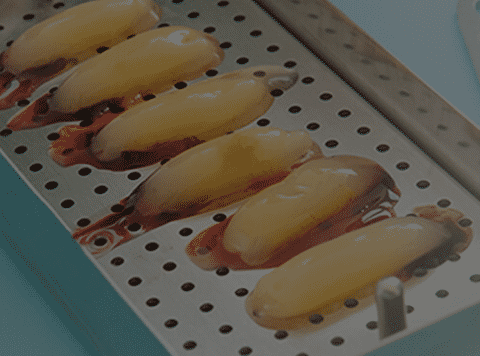Due to the gradual improvement of people’s living standard, the change of diet structure, and the increasingly serious problem of aging population, there are more and more patients who need oral implant treatment because of missing and damaged teeth. And as people pay more and more attention to dental health, many people have started to improve their dental problems through oral implants.
What is oral implant?
Dental implants, also known as artificial dental implants. In layman’s terms, it is the process of placing an implant made of artificial material into the alveolar bone of a missing tooth and then placing a crown on it.
Dental implants are internationally considered to be the preferred means of restoring missing teeth. They are similar to real teeth in terms of function, form and use, and can be called “simulated teeth”. However, in some cases, the width and height of the alveolar ridge may decrease after implantation, and the alveolar bone stimulation may decrease and atrophy, resulting in a lower than normal bone volume in the alveolar area, which affects the restorative effect, therefore, promoting bone regeneration becomes the key to treat the problem of insufficient bone volume in the alveolar area.
PRP – a new option for oral implant treatment
Dental diseases such as tooth loss not only adversely affect the normal eating of the patient, but also may affect the emotional state of the patient. As far as we can see, in the process of oral implantation, when the amount of bone in the implant area is insufficient, the survival rate of implants treated by simple implantation of artificial bone powder is low and the clinical effect is not ideal, while platelet-rich plasma (PRP) not only has coagulation effect, but also contains various growth factors related to cell proliferation, bone regeneration and wound healing, so the research on the application of PRP in oral implantation has been given high attention by experts.
PRP contains high concentrations of platelets, growth factors, fibronectin and leukocytes, which constitute a natural three-dimensional meshwork scaffold. When PRP is applied around the implant, the growth factors released can guide the osteoblasts and other undifferentiated mesenchymal cells to migrate towards the implant surface, adhere to the wall and differentiate.
For the clinical application of PRP in the regeneration of oral implant bone, some experts have conducted effective clinical studies on it. Twenty-two patients with oral implant bone defects were selected and randomly divided into observer and control groups, with 11 cases in each group. Patients in the control group were implanted with Bio-Gide artificial bone powder, while the observation group was implanted with a mixture of Bio-Gide artificial bone powder and PRP, and the bone graft healing was observed in both groups.
The imaging examination showed that after 1 month of surgical treatment, the density of the bone graft area in the observation group increased significantly and the clarity of the bone graft particles decreased continuously; after 4 months of surgical treatment, the bone graft particles became blurred and showed “hairy glass-like” changes, which showed that the material in the bone graft area was well integrated with the surrounding bone tissue and the bone graft particles were gradually replaced by new bone tissue. The bone graft was gradually replaced by new bone tissue.
Histological observation showed that there was a large amount of new bone tissue in the observation group, and the presence of osteoblasts at the edge of the bone graft particles could be clearly observed under high magnification microscope, while outside the particles, osteoblasts would form bone-like material, which would form new bone through continuous mineralization, while only a small amount of new bone tissue appeared in the control group. Four months after the bone grafting surgery, the patients in the observation group showed significantly more new bone tissue than the control group, and the difference was statistically significant. Thus, the proper application of platelet-rich plasma can significantly enhance the therapeutic effect of oral implantation and can effectively promote bone regeneration without adverse effects.
At present, the application of PRP is no longer limited to a single department, but has also been widely used in the discipline of oral implantology, providing an effective treatment method for the majority of patients with missing teeth, and proving its great potential in soft tissue and bone tissue regeneration. It is believed that in the future, we can also see PRP applied in the treatment of more diseases.








